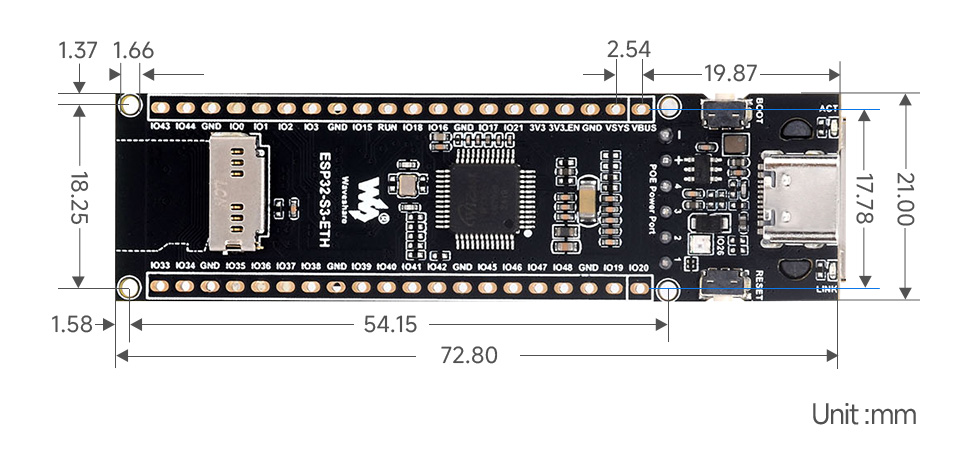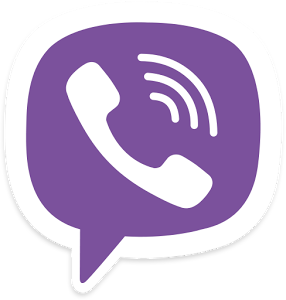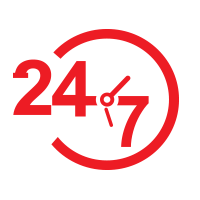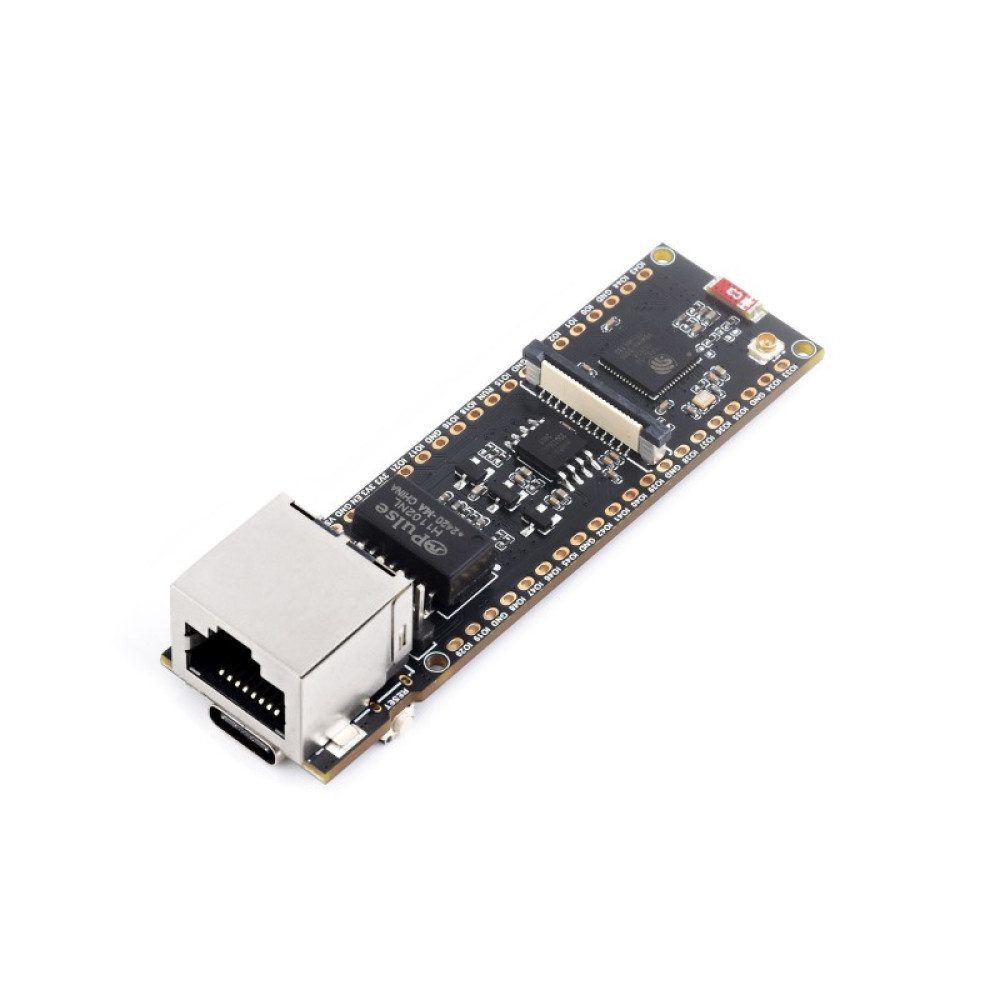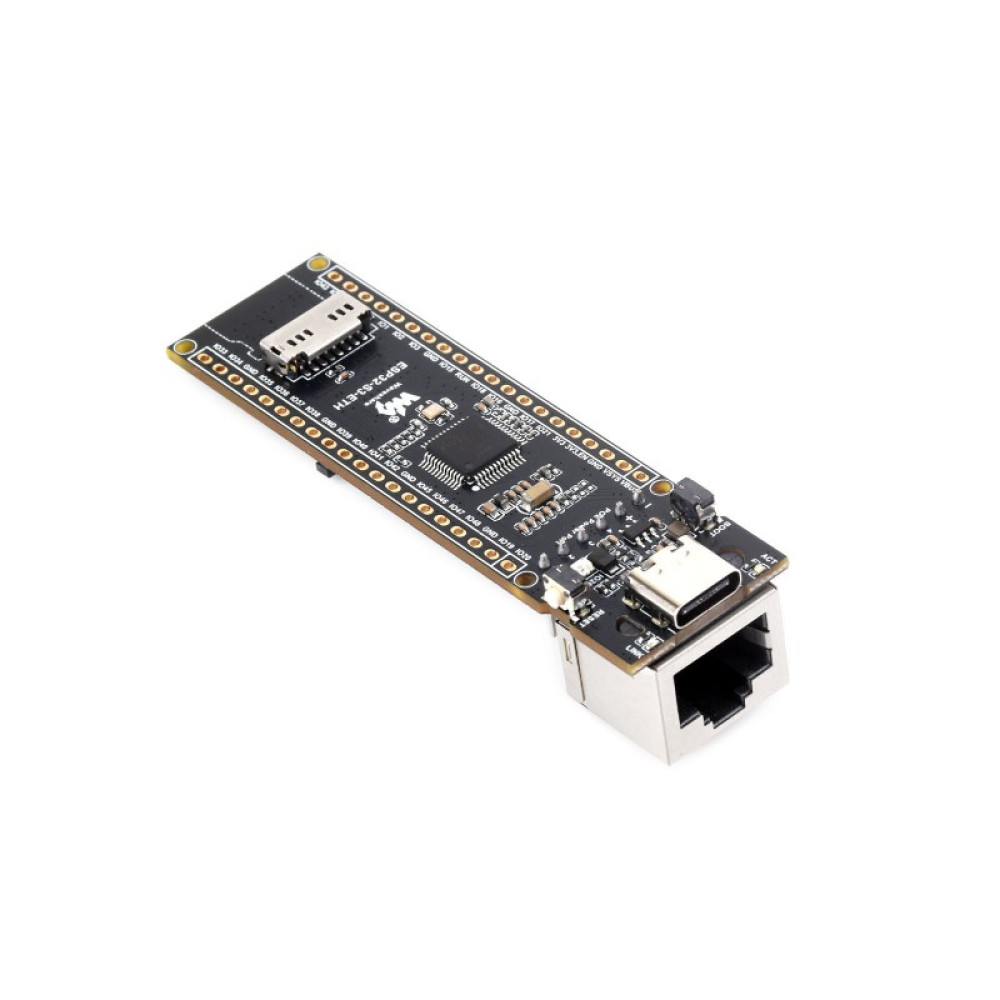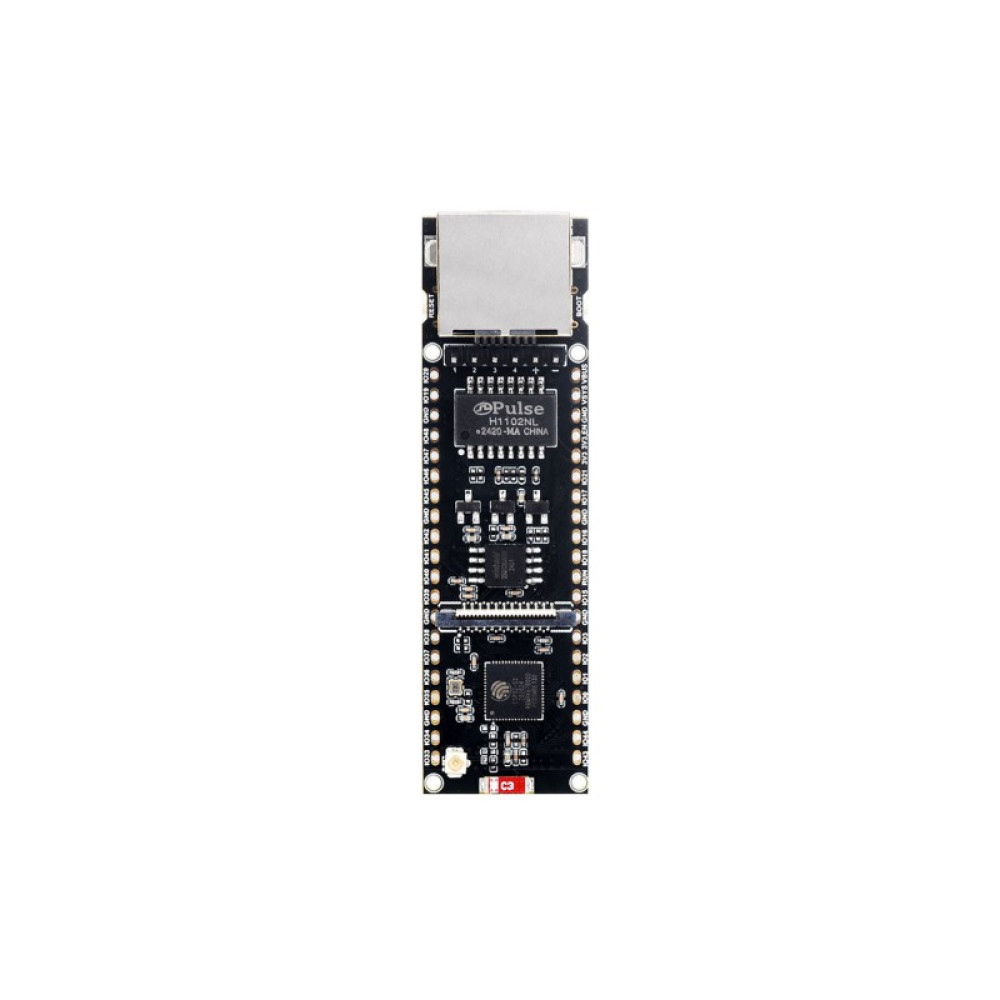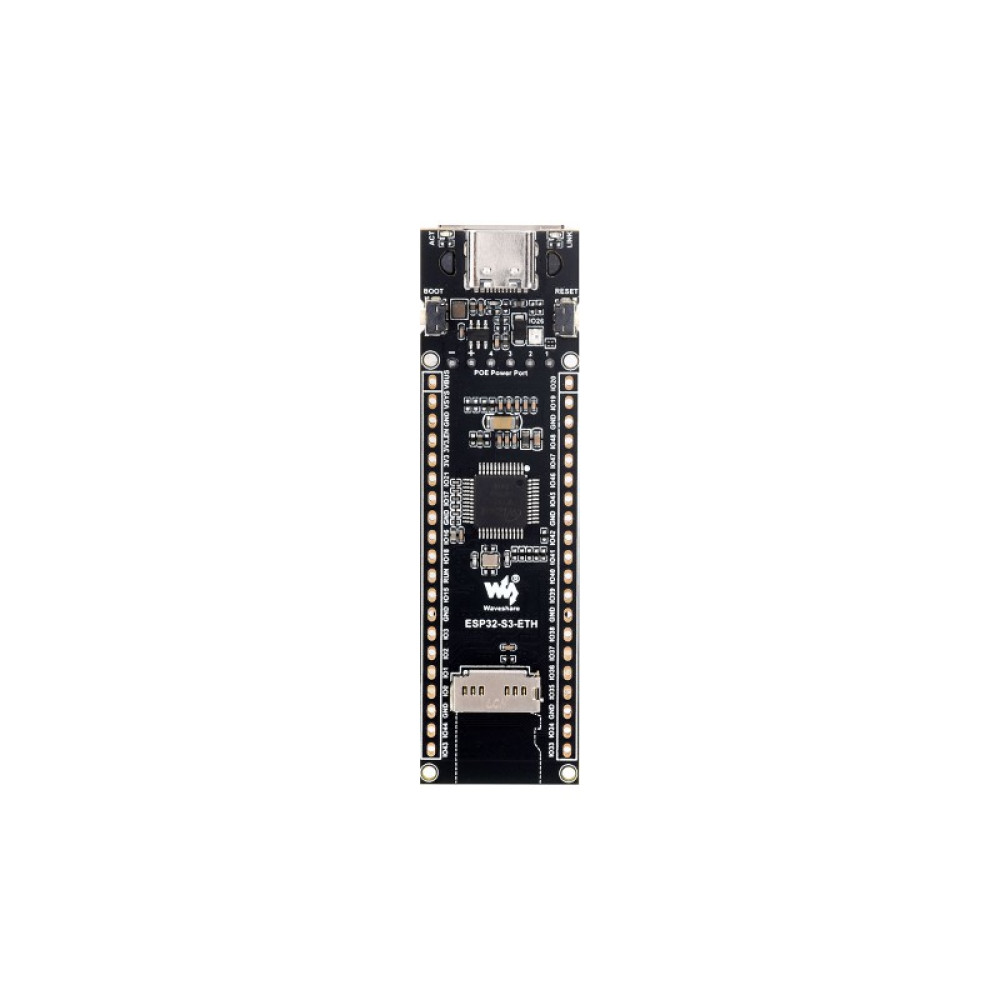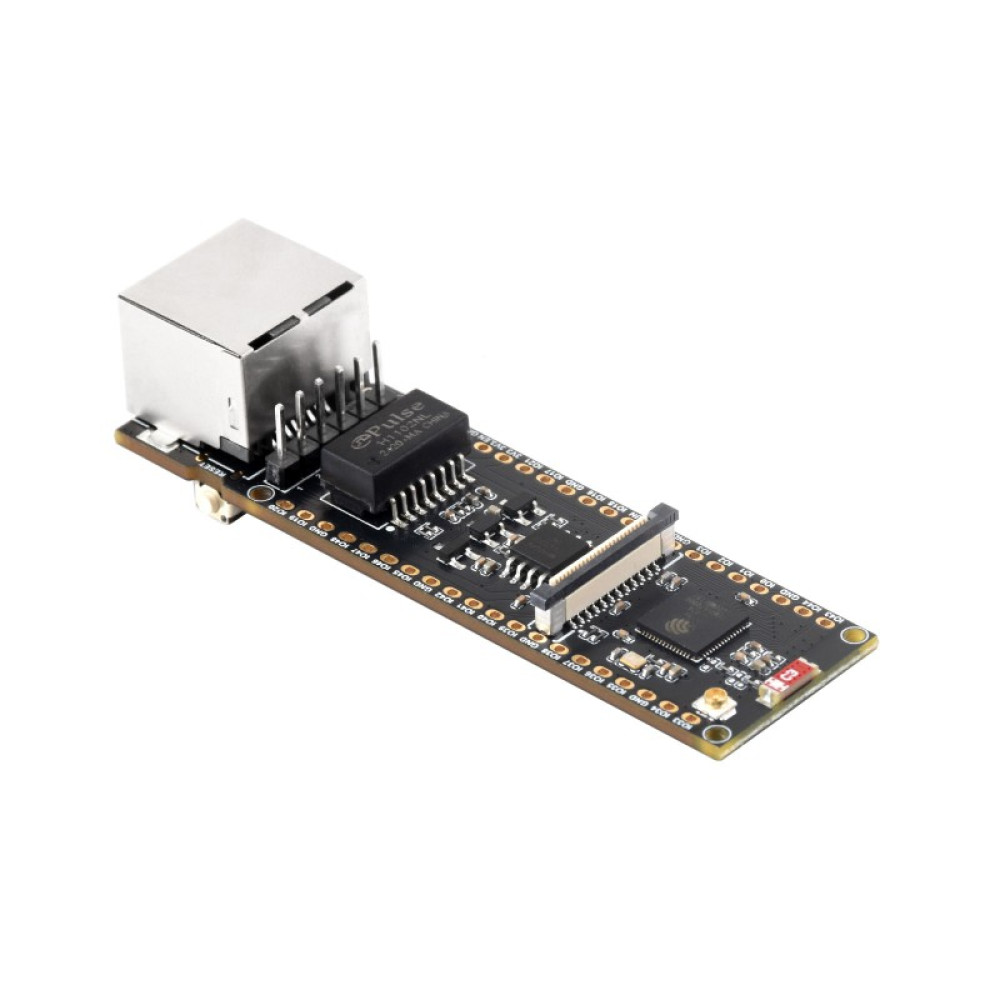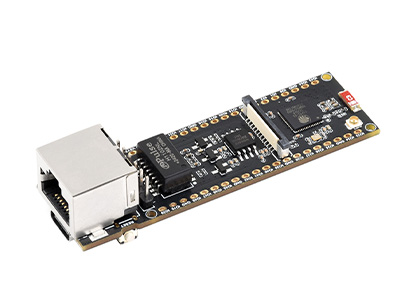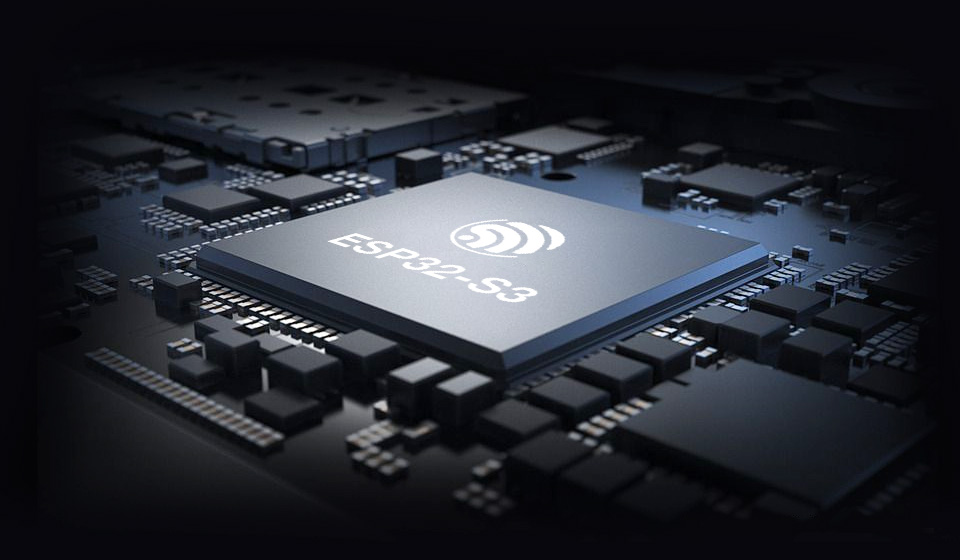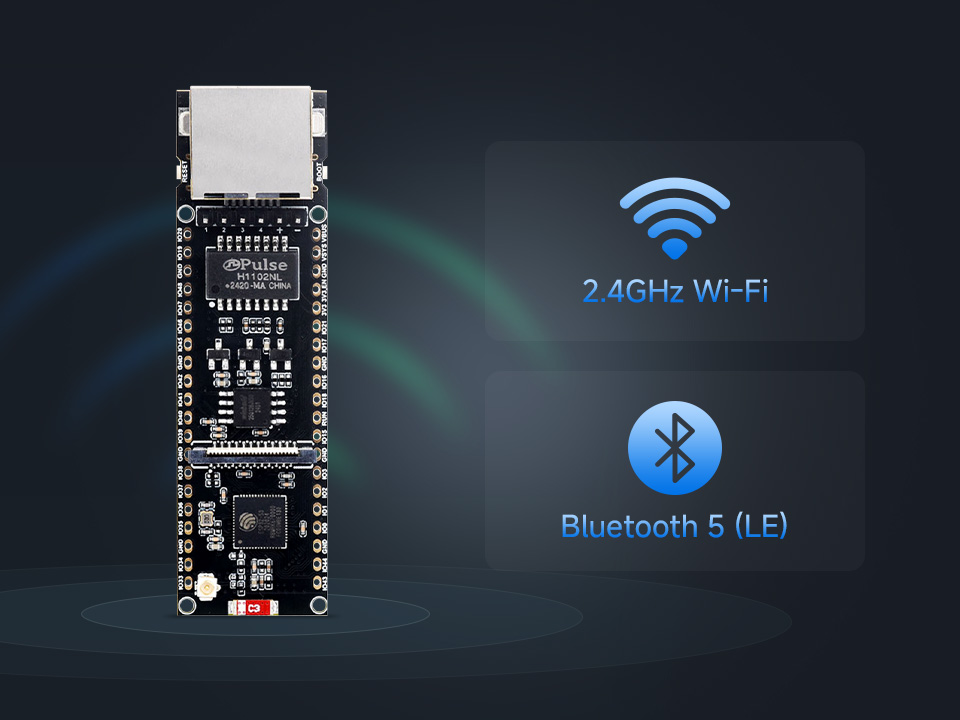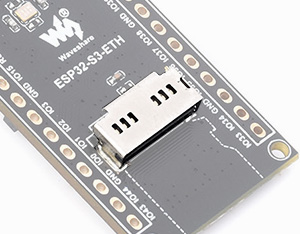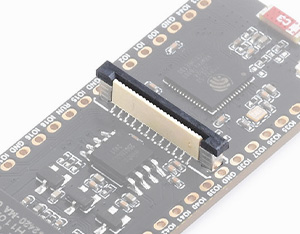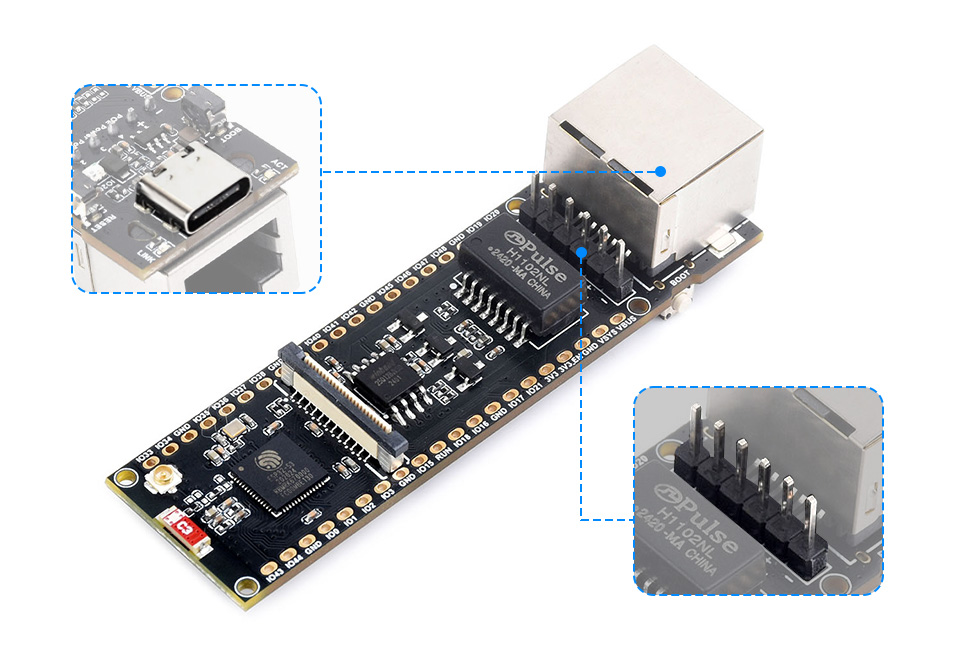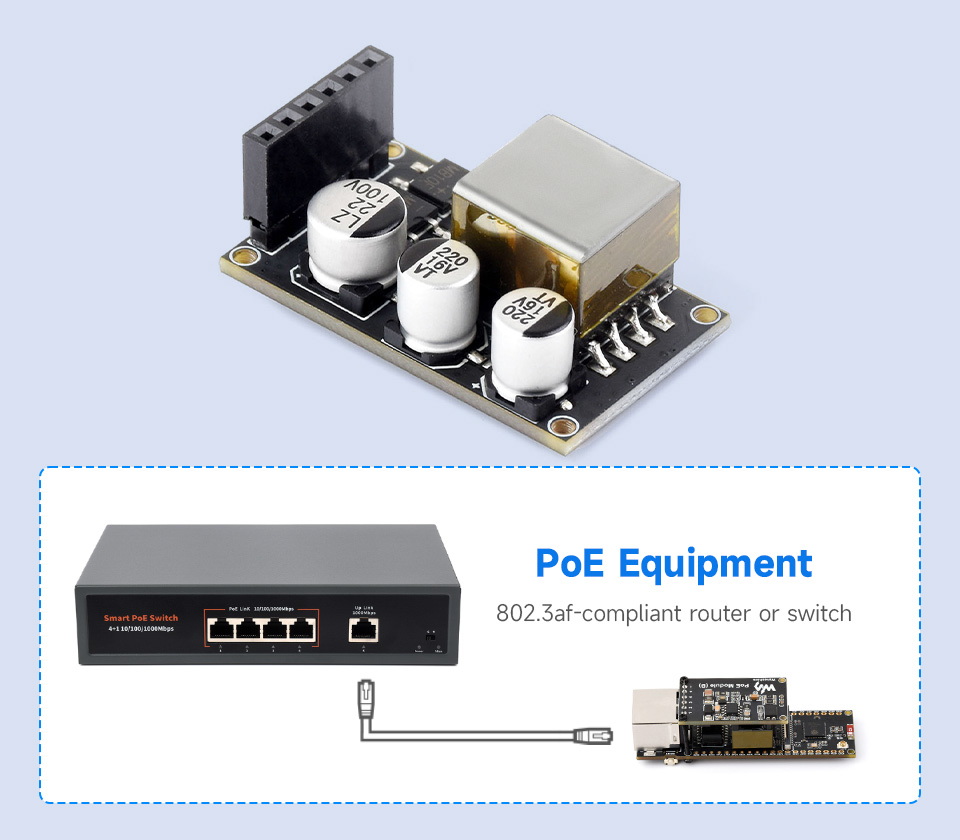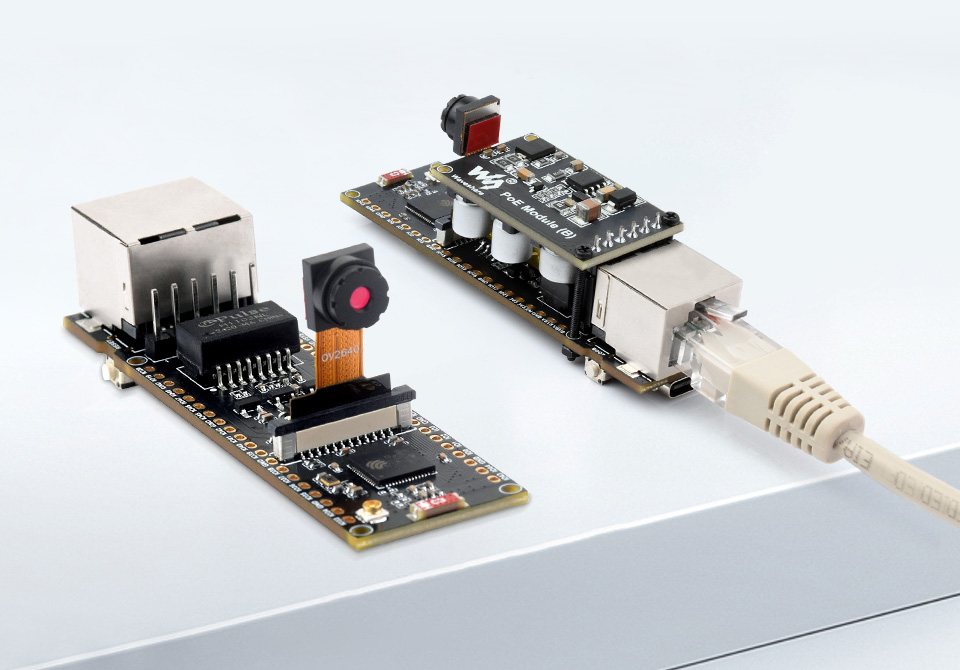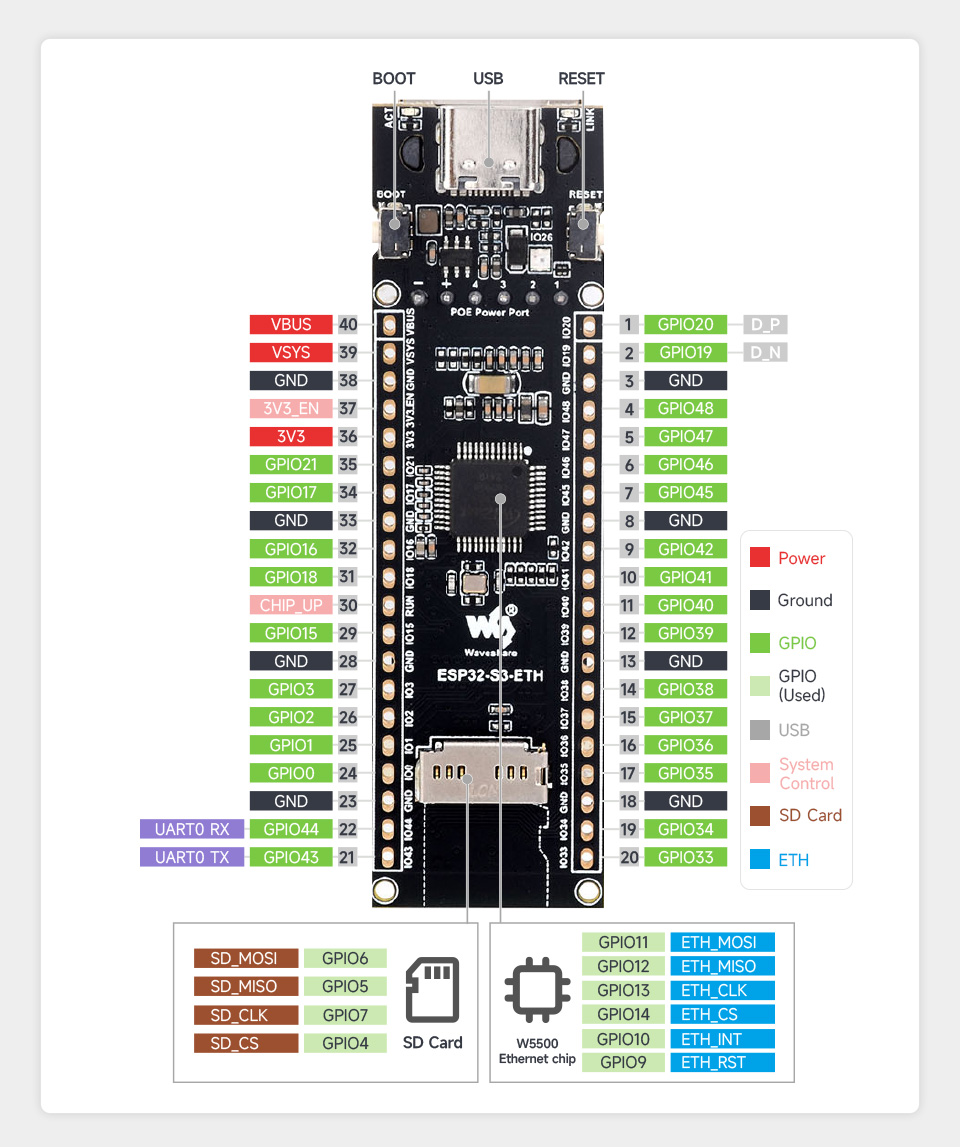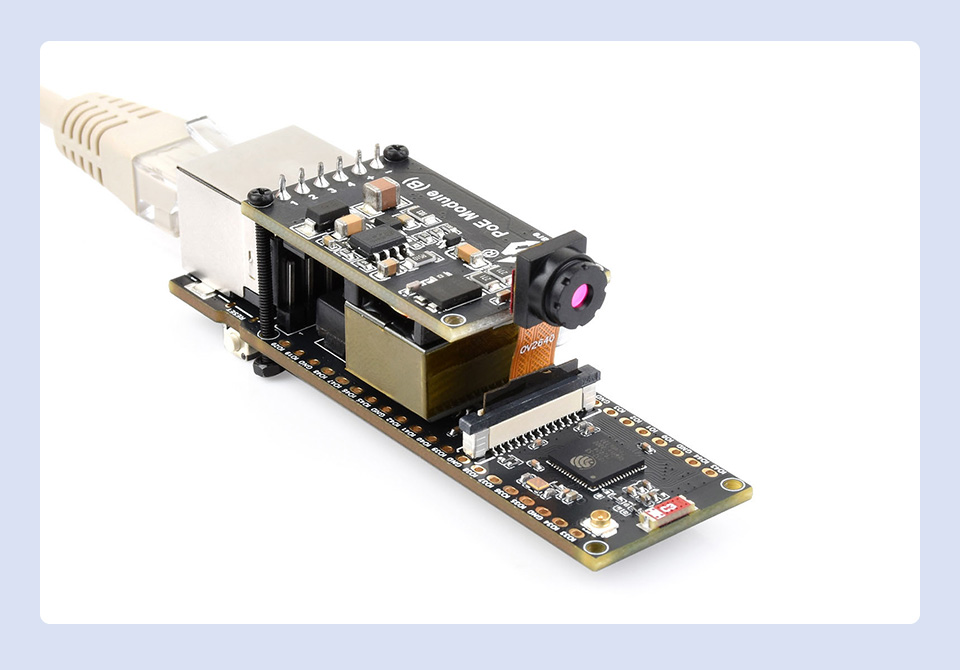Микрокомпьютер ESP32-S3-ETH, 240MHz, 512KB SRAM, 16MB Flash, Wi-Fi, Bluetooth 5
95,00 руб.
ESP32-S3 ETH Development Board
Supports Wi-Fi, Bluetooth, and Ethernet communication, Optional For PoE Function
Onboard TF card slot, camera interface and Pico-compatible header
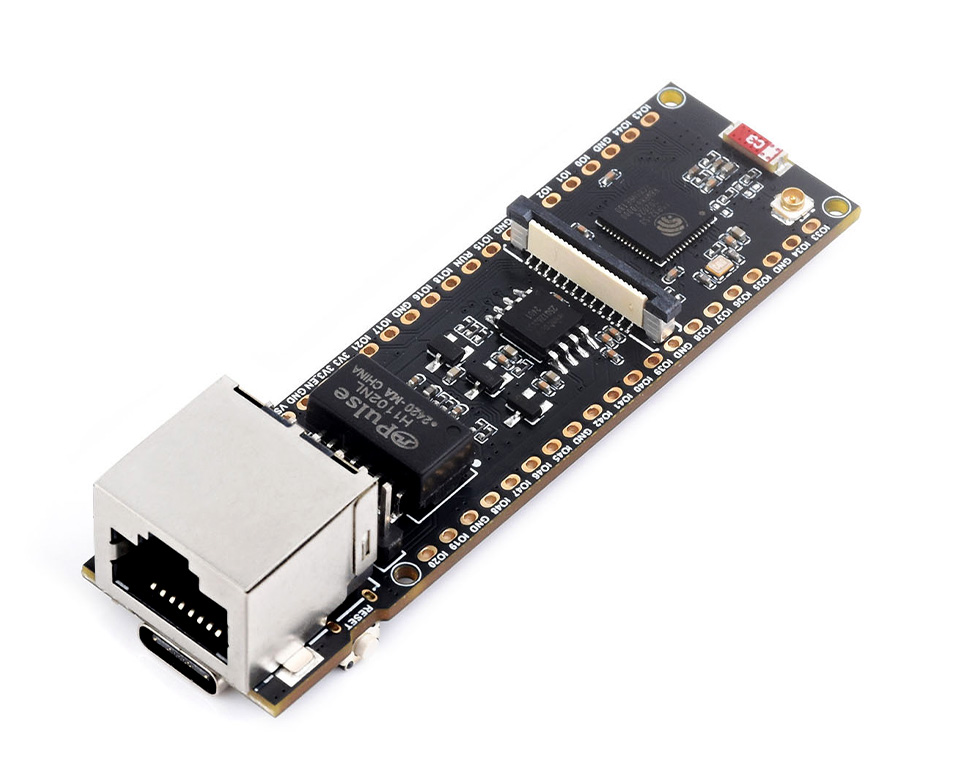

What's On Board

1. ESP32-S3R8 Xtensa 32-bit LX7 dual-core processor, up to 240MHz operating frequency
2. W25Q128 16MB Flash memory for program and data storage
3. W5500 Ethernet chip
4. H1102NLT Ethernet transformer
5. JW5060 Voltage regulator
6. USB Type-C port for power supply and program burning
7. RJ45 Ethernet port 10/100M auto-negotiation Ethernet port
8. PoE module header for connecting PoE module
9. Camera interface Compatible with OV2640, OV5640 and other mainstream cameras
10. IPEX 1 antenna connector Reserved connector, enabled via resoldering an onboard resistor
11. Ceramic antenna used by default
12. TF card slot
13. BOOT button
14. ACT indicator
15. LINK indicator
16. RESET button
outline dimensions
